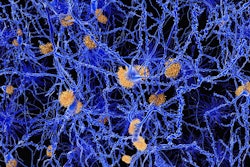Dear Molecular Imaging Insider,
No one has to remind the nuclear medicine community about the harrowing global molybdenum-99 (Mo-99) shortage of 2009. It may have been almost a decade ago, but the specter of a possible repeat has prompted the kind of collaboration and cohesion that hopefully will prevent another imaging calamity.
In fact, the worldwide supply of radioisotopes may be at its most stable level in decades, despite the recent closure of the National Research Universal nuclear reactor, which at one time supplied the bulk of Mo-99 to North America. Four nuclear reactors around the world have pledged to keep Mo-99 coming by making substantial investments in infrastructure, converting to more environmentally friendly production techniques, and ramping up capacity if one supplier goes offline.
Details on the current demand for Mo-99 and near-term plans for covering the need are available in our Insider Exclusive.
The U.S. has been devoid of a Mo-99 manufacturer, but that situation could change very soon, thanks to the U.S. Food and Drug Administration's recent clearance of the RadioGenix isotope separation system from NorthStar Medical Radioisotopes. The system is designed to generate sterile sodium pertechnetate technetium-99m from Mo-99 and alleviate worries about inadequate sources of Mo-99.
In other news, a new study found that sonographers who performed cardiac ultrasound studies on patients who recently received nuclear myocardial perfusion imaging scans were exposed to residual radiation from the patients. While the radiation levels were low, the researchers advised that sonographers modify their scanning techniques.
Studies have also shown promising results with two novel PET imaging agents. The radiotracer carbon-11 DASB, which targets the serotonin transporter protein in the amygdala, could help determine the efficacy of treatment for major depressive disorder. In addition, researchers in Europe reported that their PET imaging agent, carbon-11 Me-NB1, could help guide treatment for people with various neurological diseases.
Finally, the U.S. National Institute on Aging and the Alzheimer's Association jointly published guidelines for the research community to help classify whether individuals have Alzheimer's disease. The criteria rely heavily on the use of biomarkers such as beta amyloid and tau protein to judge the severity of an individual's condition.
Be sure to visit the Molecular Imaging Community on a daily basis for the latest news and research from around the world.




















